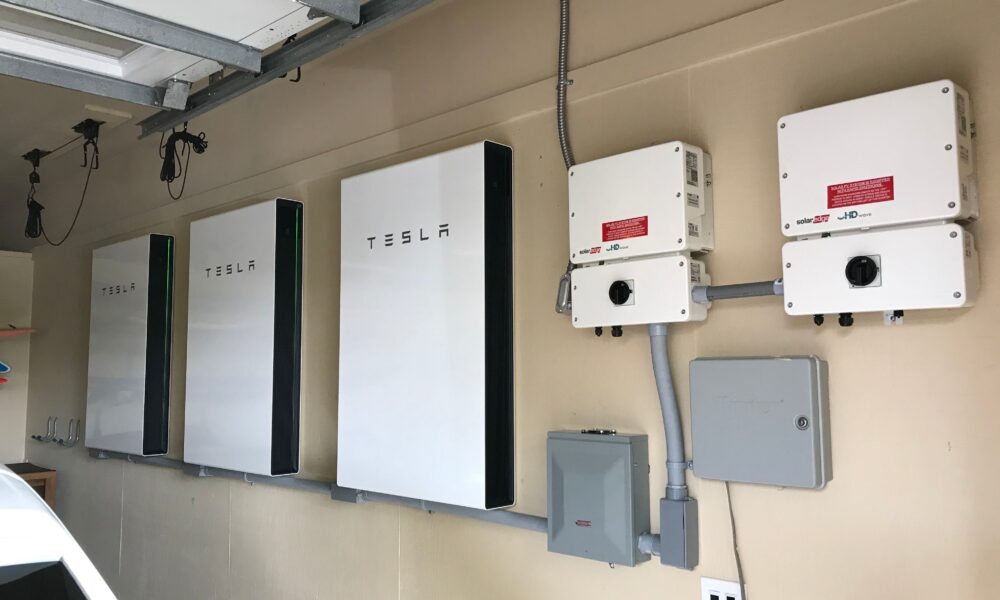Table of Content
The Powerwall can provide a full day of battery backup during cloudy or winter days. Its capacity extends to 2.5 days on a sunny day or during the summer. Installing two batteries increases capacity to 1.5 days in cloudy conditions and more than seven days with full sun exposure.

For homeowners looking to save the maximum amount of money, investing in a grid-tied solar system may make more sense. Enables solar energy self-consumption for partial or full off-the-grid home. A reliable source of electricity by acting as a back-up power in case of power outage (13.5kWh).
Incentives or Rebates: Does Tesla Powerwall Qualify?
Tesla’s vehicles are known for their cutting-edge technology and performance. Tesla vehicles are also known for their high levels of construction. The Model S and Model X, two of Tesla’s best-selling vehicles, are among the most popular vehicles on the market. Tesla products have a high level of environmental friendliness and innovation. Tesla’s products are well-known for their customer service as well as their quality. Tesla is the company to contact if you are looking for a vehicle that is both environmentally friendly and high-quality.
Because it is an AC-coupled solution, Powerwall is compatible with typical home energy systems. As a result, Powerwalls are not commonly bought by homeowners to save money but rather because they live in areas that experience frequent power outages. No, the Tesla Powerwall is not cheaper than other solar batteries. The Powerwall is considered expensive compared to other solar battery options due to the brand name, high capacity, and power output.
Can I Add A Tesla Powerwall To My Existing Solar System?
When considering any battery or a solar battery to extend your solar panel array, it is a good rule of thumb to compare their key specs. Together, they can influence the price and the performance of your power storage system. A rechargeable lithium-ion battery cannot be charged to 100% in cold weather.
This is better than some other devices that store electricity, but Tesla’s customer support is known to be very laggy and unprofessional for existing customers. The continuous power rating of your Tesla Powerwall tells you how many appliances you can run all at the same time. The power rating depends on your Powerwall system and how many batteries are connected to the home.
TESLA SOLAR ROOF 😳🤭 NEW SIDING X ROOF PROJECT
The Powerwall+ provides the same amount of power under no-sun conditions, but its full sun capabilities are much higher, with 7.6 kW continuous power and 22 kW peak power. The This Old House Reviews Team has analyzed the Powerwall’s key features and specifications to determine if it’s worth the cost. Your Tesla Powerwall qualifies for solar rebates only if it is coupled with a solar panel system. Considering that Tesla sells their Powerpacks in combination with a solar panel system, an average home can get the incentives or rebates for the Powerwall as well. On the other hand, if you purchase your Tesla Powerwall through a Tesla Certified installer, you may not be eligible for rebates and incentives. The warranty says that the device will retain 70% of its usable capacity at the end of the 10-year period.
This allows you to manage your battery’s power output during an outage. If you prefer to reserve more energy in case of a power system outage, you can set a higher reserve percentage. The Tesla Powerwall’s 13.5 kilowatt-hours lithium-ion home battery can help you become more grid-independent and protect you from power outages. With easy installation and a minimalist design, Powerwall complements a variety of home styles and solar systems. The compact, all-in-one construction features versatile mounting options for indoor or outdoor spaces. Chat with an energy advisor to ask any questions about Tesla Powerwall.
However, there is also supporting hardware to purchase for an additional £500, totalling £5,900 including VAT. This doesn't include the cost of installing it in your home, however, which Tesla estimate to be anything from £800 – £2,000 on top. Keep in mind though – it cost Nick nearly $17,000 in total to install the unit.
Top solar companies and stores excess energy from your solar system to use at night, during power outages, or to offset high electricity costs. With a variety of Model-branded EVs to choose from, the company offers an option for most buyers. The Tesla Model S is the best choice if you want Tesla's fastest and most capable consumer vehicle. The Model X delivers similarly robust power in a larger SUV footprint. The Model 3 and Model Y are cheaper versions of the S and X, respectively, offering the core Tesla experience at a lower price. Outside of its cars, Tesla also offers power and energy solutions for the home — including solar panels, solar roofs, and the Powerwall.
We display the information in the same format for all the home battery storage products we look at, to help you compare and contrast. As the smart meter roll out continues, more and more smart tariffs will be made available to consumers. These smart tariffs allow you to charge your Powervault 3 when electricity prices are at their lowest. You can then discharge that cheap electricity when you need it during the day – normally when tariffs are much higher.
The Tesla LCOS is still significantly less expensive than electricity in Hawaii, where it costs $0.04 per kWh. Tesla’s Powerwall stores energy for emergency situations, such as during a power outage. The Powerwall can detect when an outage occurs and then automatically enable itself to provide power to the home and all the electrical devices inside. It also stores extra solar energy so you can keep reducing your electrical grid usage even when there's not much sunlight. Think of it as a backup generator/battery for your home's solar energy. There's no denying that the Powerwall is an impressive piece of tech, but it also has many people wondering how much a Tesla Powerwall costs for all that functionality.
The basic functionality of the device is compatible with most types of off-grid inverters. It provides a backup solution for homes and small businesses that is independent of the grid. Inverter power rating will have to be matched to Tesla’s Powerwall power rating. Powerwall offers a complete, integrated solution for new installations, allowing solar backup in addition to providing whole home backup, while Powerwall can be integrated with existing solar systems.
After this time frame, there is no guarantee for how long the battery will last or what charging capacity it will maintain. The Tesla Powerwall 2 and Powerwall+ have a storage capacity of 13.5 kWh. You can add up to 10 batteries to your home, but one to two batteries should be enough to meet most homeowners’ energy needs. You’ll need two or more Powerwall batteries to go off-grid altogether. The Powerwall was introduced in 2015 to complement Tesla’s growing developments in solar technology.

No comments:
Post a Comment